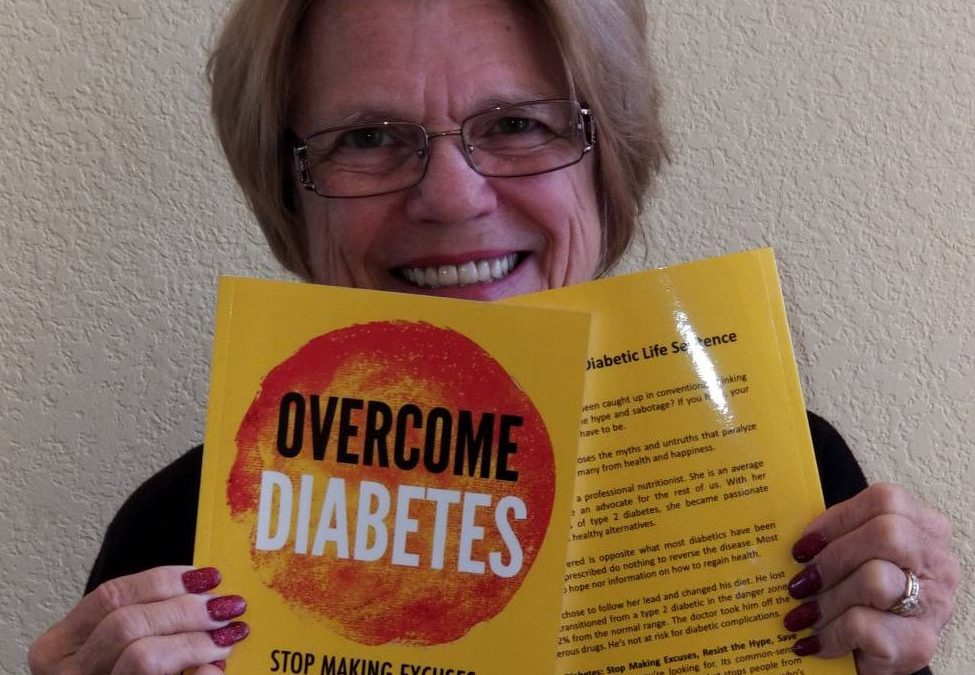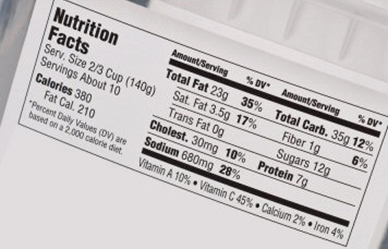
by Marian Hays | Health
Reading Food Labels
Reading food labels is one of the most effective ways of determining the right kind of food to buy in the supermarket. It lets you make sensible food selections. The food label includes valuable information, especially to a diabetic.
Admittedly, reading food labels can be very tedious and confusing. Nevertheless, once you get the hang of it, it will be easier for you to maintain healthy food choices by knowing what’s really in the foods you are purchasing and consuming.
The ingredient list
This is a good place to start before looking at the numbers on the food label. Ingredients are listed in order of quantity to the entire product.
If sugar is listed first, there is more sugar in that product than anything else. The closer it is to the beginning of the list the more of it is present in the food. Unfortunately, sugar has so many different names – many of the chemical – that you might see 4 types of sugar listed further down the label, some chemical names. Add them up and sugar could be the largest ingredient in the product.
Avoid foods that list items that don’t work well for you. Allergic to rosemary? Check the label to see if it’s listed. Products with a lot of unpronounceable chemical ingredients should also be avoided.
Look at the serving size and compare that to the number of carbohydrates is in a serving. Diabetic serving size for carbohydrates is usually 15 grams. If one serving is higher than 15 grams, you’ll have to eat less than the suggested serving size to stay on track with your meal plan.
Sugar-free foods
These may grab your attention as something safe and yummy to add to your shopping cart. But look at the carbohydrate and fat counts first. Most foods that are sugar-free use artificial sweeteners and sugar substitutes, but have higher carbohydrates or fats added. There are always tradeoffs to make the foods tasty.
Check the fat content.
Unless you are on a very controlled keto diet, look for a small number of fat grams. Protein, carbohydrates, and fats are listed in grams. However, protein and carbs have 4 calories per gram in the calorie count. Fat, on the other hand, has 9. More than double the protein and carbs. So, the total calories from fat could be much higher than expected. As a percentage of the product, it could easily be over 50% of the total calories.
Back in the 70’s, the government declared war on fats (like Arnold Schwarzenegger said in True Lies, “they were all bad”). So, the food manufacturers decreased fats and increased sugars and carbs for flavor. And the swelling of America happened.
Fortunately, now the tables are turning. It’s been scientifically proven that fats aren’t all bad. But you need to know what kind of fats you’re eating. Trans fats should be avoided. Some saturated fats are fine – coconut and avocado for example. All fats have the same 9 calories per gram, but they react differently in your body.
Through the “Nutrition Facts” section of the label, you can identify the serving sizes and number of servings. Remember to take into consideration how much you eat as a single serving.
The amounts and kinds of nutrients are included in the label. Usually, the label contains the information on saturated fat, sodium, total fat, fiber, and cholesterol amount “per serving.”
Things you need to know
Serving size
As already stated, the amount of servings on the label refers to the quantity of food the manufacturers determine people “usually” consume. Food manufacturers may use this to trick the casual observer into thinking there are fewer calories, fats, and carbs in the product.
The manufacturer cleverly shows acceptable amounts but increases the number of servings. If you typically consume an entire package of mac and cheese in one sitting, you need to multiply the number of servings by the grams/calories shown to get the real amounts and their effect on your body. You may be stunned at how many calories, fat grams, and carbs you’re eating.
We live in a supersized world
A restaurant’s “single serving” is usually about two or three at-home servings. We’re used to larger quantities without even thinking that it means more calories.
Nutrients
This refers to the list of available nutrients in the food product. The percentages are based on the government’s recommended daily dietary allowance, usually an arbitrary 2,000 calories. However, if you have a very small frame and can only burn 1,500 calories/day, you might need to recalculate the percentages.
Ingredients
This refers to the list of the ingredients that were used to manufacture the product, arranged from the greatest amount by weight to the smallest quantity. Occasionally some ingredients are listed as “other spices,” for example, in unknown amounts, which usually means a very small quantity.
Label claim
This refers to the kinds of nutritional claims of the food item. For instance, if the label says it’s sodium-free, it should have less than 5 milligrams per serving, or a low-fat item should contain 3 grams of fat or less.
In looking at carbohydrates, the label should show total carbs and fiber. If you subtract the fiber grams from the total carbs, you will have net carbs. Since fiber is non-digestible, some diet plans count only the net carbs.
Happy label reading! Just be prepared to put things back on the shelves.
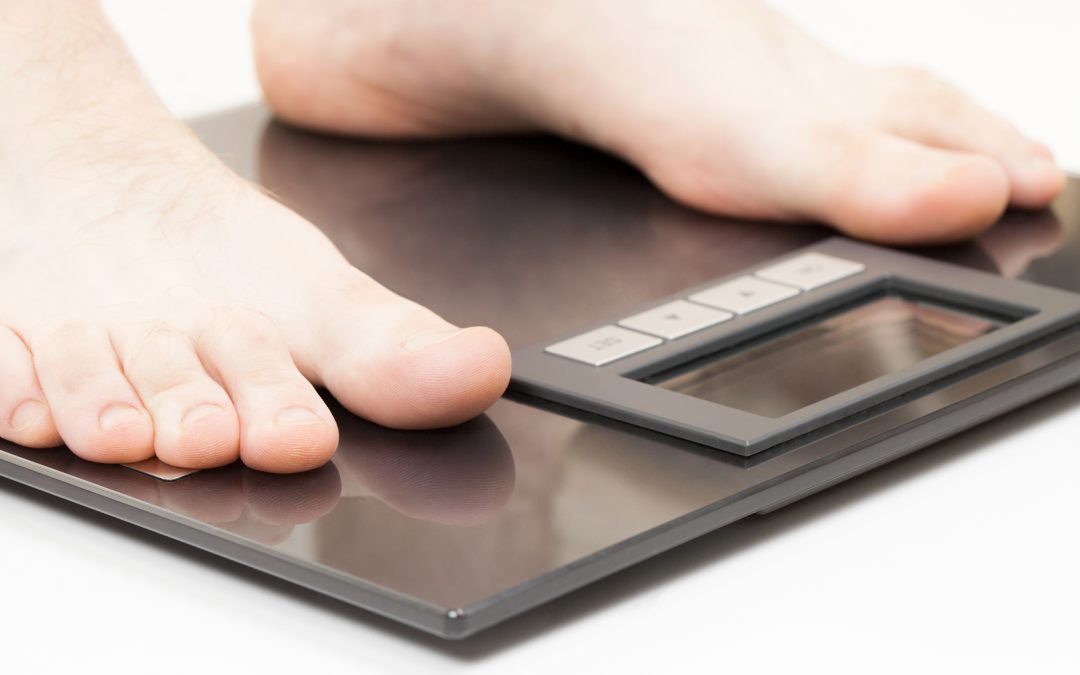
by Marian Hays | Health
People with diabetes have higher than normal blood glucose, or blood sugar, levels. The digestive tract breaks down carbohydrates, sugars, and starches found in many foods, into glucose, a form of sugar that enters the bloodstream. The pancreas, through insulin, regulates the amount of glucose entering the cells of the body. Glucose that can’t be accepted by the cells is converted into fat.
Type 1 Diabetes: Type 1 diabetes typically occurs in children and young adults, though it can appear at any age. In the past, type 1 diabetes was called juvenile diabetes or insulin-dependent diabetes mellitus. The body is deficient in insulin or can’t produce it naturally so the diabetic is dependent on prescribed insulin.
Type 2 Diabetes: Type 2 diabetes develops most often in middle-aged and older people who are also overweight or obese. The disease is now becoming more common in overweight and obese children and adolescents. Most doctors will prescribe medication to regulate blood sugar and insulin production. Insulin is not commonly prescribed for type 2 diabetics.
Physical Inactivity, Obesity, and Diabetes
Physical inactivity and obesity are strongly associated with the development of type 2 diabetes. About 80 percent of people with type 2 diabetes are overweight or obese. Type 2 is not genetic, but the eating patterns may be passed on through family habits.
An imbalance between caloric intake and the number of calories burned (physical activity) lead to overweight and obesity. It’is common in people with type 2 diabetes. Central obesity, in which a person has excess abdominal fat, is a major risk factor not only for type 2 diabetes but also for heart and blood vessel disease, also called cardiovascular disease (CVD). This excess belly fat produces hormones and other substances that can cause harmful, chronic effects in the body such as damage to blood vessels.
Measuring your waist is a quick way of assessing your diabetes risk. This is a measure of abdominal obesity, which is a particularly high-risk form of obesity. Measure your actual waistline (not your pant size). It should be 1/2 or less than your height in inches. Women have a higher risk of developing type 2 diabetes if their waist measures 31.5 inches or more. Asian men with a waist size of 35 inches or more have a higher risk, as do white or black men with a waist size of 94cm (37 inches) or more.
Simple Steps to Lower Your Risk
Making a few lifestyle changes can dramatically lower the chances of developing type 2 diabetes. They can also lower the chances of developing heart disease and other life taking cancers. The same changes may reverse type 2 diabetes and prevent prediabetes from developing into type 2.
1. Control Your Weight: Being overweight increases the chances of developing type 2 diabetes by seven-fold. Being obese makes you 20 to 40 times more likely to develop diabetes than someone with a healthy weight. Losing weight can help if your weight is above the healthy weight range. Check your BMI. Losing 7 to 10 percent of your current weight can cut your chances of developing type 2 diabetes in half.
2. Get Moving and Turn Off the Television: Inactivity promotes type 2 diabetes. Working your muscles more often and making them work harder improves their ability to burn glucose. This puts less stress on your insulin-producing pancreas.
3. Tune Up Your Diet: 4 dietary changes can have a big impact on the risk of type 2 diabetes
a. Avoid refined carbohydrates and other processed foods.
b. Skip the sugary drinks, and choose water, coffee, or tea instead.
c. Choose good fats instead of bad fats.
d. Limit red meat and avoid processed meat; choose nuts, poultry, or fish instead.
If you are already diagnosed with diabetes, take actions to improve your health. Keep your body active, such as a walk every day. Choose healthy foods and supplements, and be sure to take the proper doses of any prescribed medications.
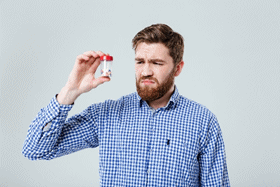
by Marian Hays | Health
A Dozen Reasons to Resist the Diabetes Miracle-Cure Hype
Not all diabetes products are hype, but many are. While some true experts offer good non-prescription solutions, many are less than beneficial “miracle cures” created by marketers. How do you tell the difference? Here are a few things to think about.
- Unless you trust the known expert promoting a product, you won’t know what ingredients are really in it. Some claim a significant amount of a special ingredient, but it may be only a very small amount with other fillers.
- The latest breakthrough product is a one-size-fits-all that doesn’t take your unique needs into consideration.
- Some claim you don’t need to change your diet. No pill, organic or otherwise, works if you continue to eat the same amount of sugar and carbs.
- Some claim you can stop your prescription meds. Dangerous.
- Marketers are masters at manipulating emotions. The miracle cure was often discovered after a heart-wrenching series of events that led to a hunt for a cure.
- The sales letter claims it’s a doctor speaking, usually someone you’ve never heard of and can’t research. The person writing the sales letter could be a very good fiction writer.
- Big Pharma is NOT afraid of these “cures.” Medical doctors will not shut down the product if they find the ad.
- Sales pitches may have a grain of truth to sound credible, but not necessarily sound science.
- They usually don’t work. Marketers know most people won’t return products for a refund.
- If you chase miracle cures you may become passive in taking care of your health.
- If your medical doctor is convinced your diabetes is a life sentence with no recovery, find another doctor who understands nutrition, not another miracle cure.
- If it sounds too good to be true, it probably is.
Want more information to overcome the confusion? Get your free report today:
3 Steps to Overcome Your Diabetes
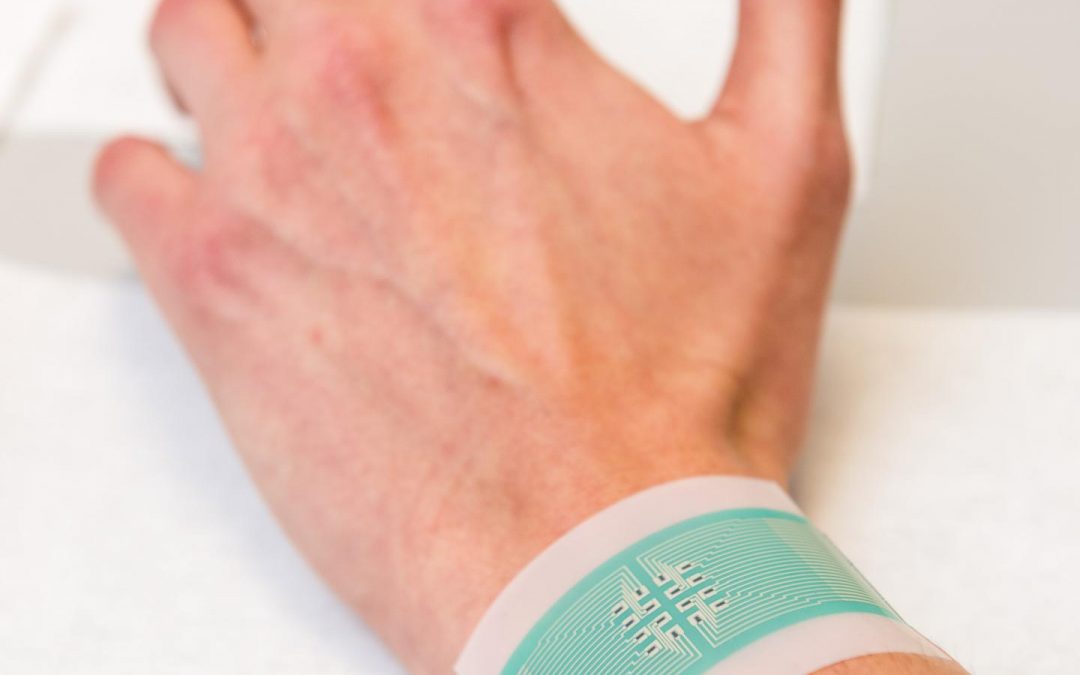
by Marian Hays | Health
Scientists have created a non-invasive, adhesive patch, which promises the measurement of glucose levels through the skin without a finger-prick blood test, potentially removing the need for millions of diabetics to frequently carry out the painful and unpopular tests.
The patch does not pierce the skin, instead, it draws glucose out from fluid between cells across hair follicles, which are individually accessed via an array of miniature sensors using a small electric current. The glucose collects in tiny reservoirs and is measured. Readings can be taken every 10 to 15 minutes over several hours.
(more…)
